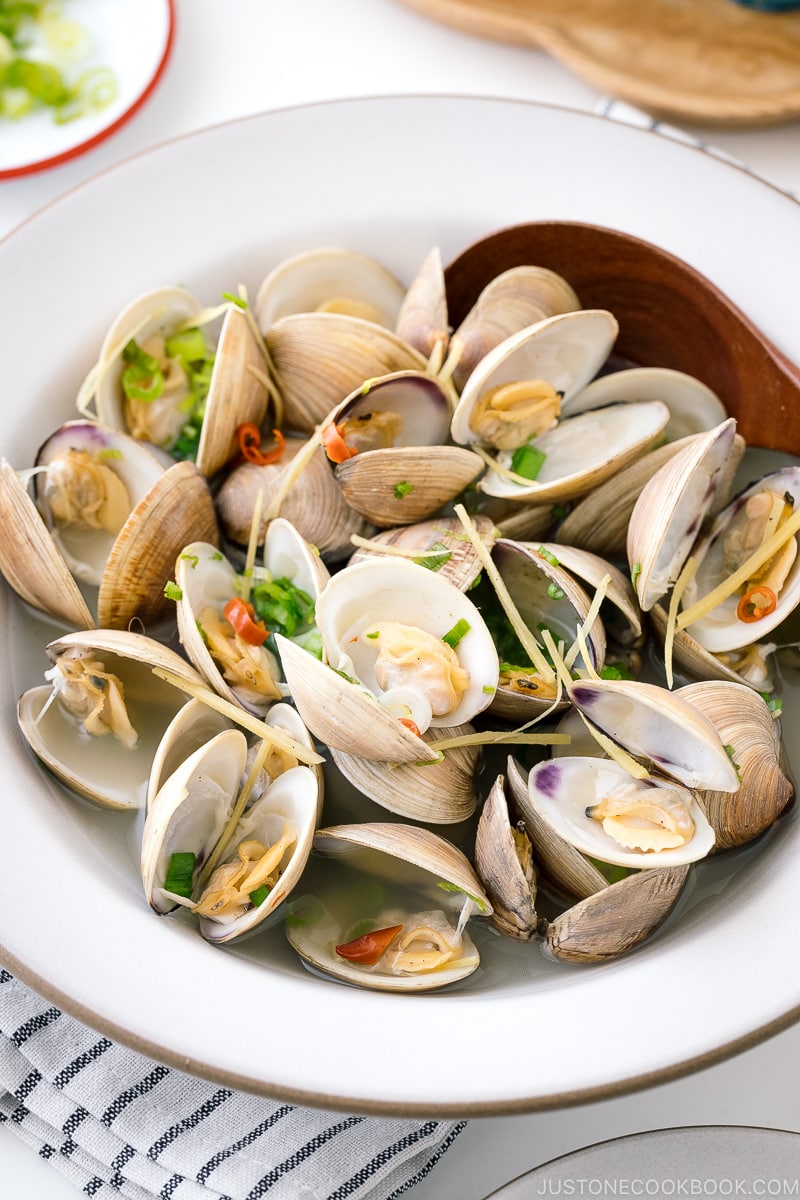
One of the easiest appetizers we can make at home is these Japanese Sake-Steamed Clams, or what we call Asari no Sakamushi (あさりの酒蒸し). It is so flavorful and takes just 10 minutes and 5 ingredients to make. A perfect dish to start your meal with family and friends!
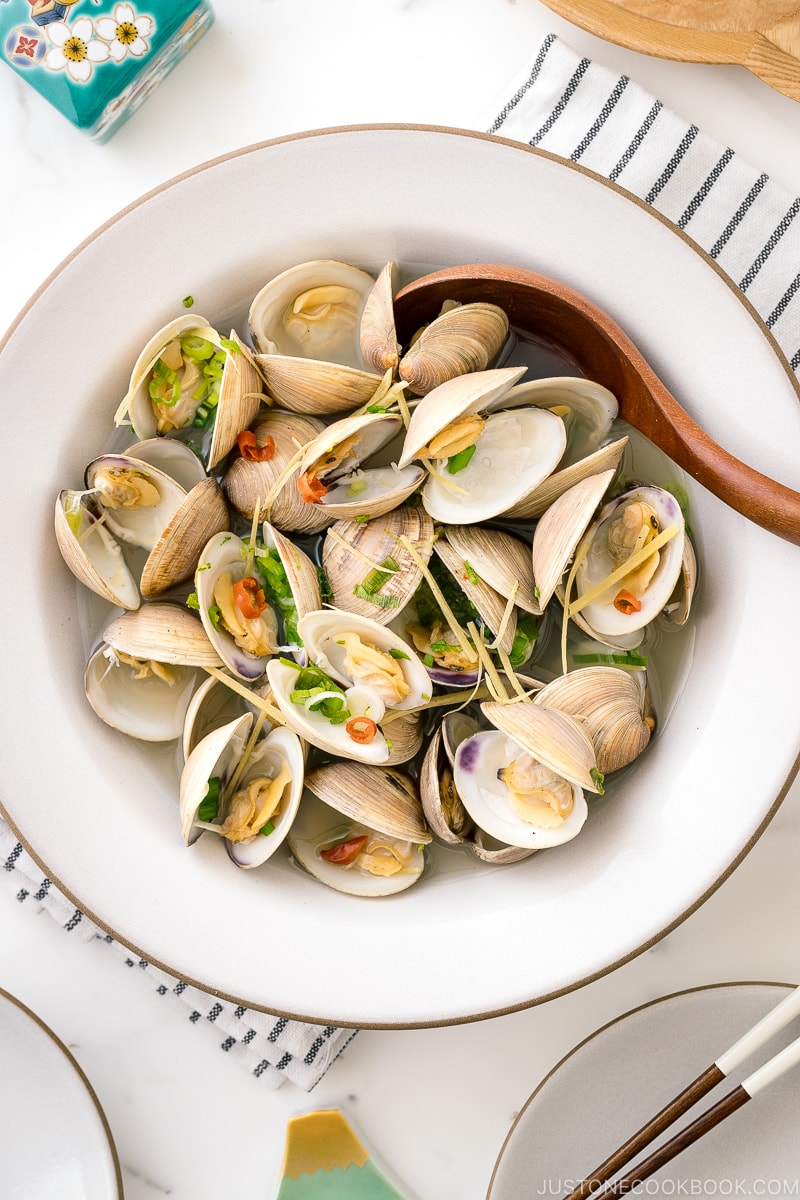
What Are Sake Steamed Clams?
Have you had steamed clams before? Steamed clams are a seafood dish consisting of clams cooked by steaming, and often seasoned with garlic, butter, white wine, etc.
In Japan, we enjoy a similar dish but we steam clams in sake, the Japanese rice wine, with a few aromatics. The simplicity of the seasonings brings out the delicious brininess of the clams, and the result is unbeatable. If you have frequented izakaya (Japanese pubs), you’d notice Sake Steamed Clams on the menus, because it’s best enjoyed with chilled glass of foamy beer or sake.
While this seafood dish might look and taste luxurious, anyone can pull it off easily. I love serving steamed clams on summer nights over a bonfire, when everyone is relaxing and sharing good food and chatters.
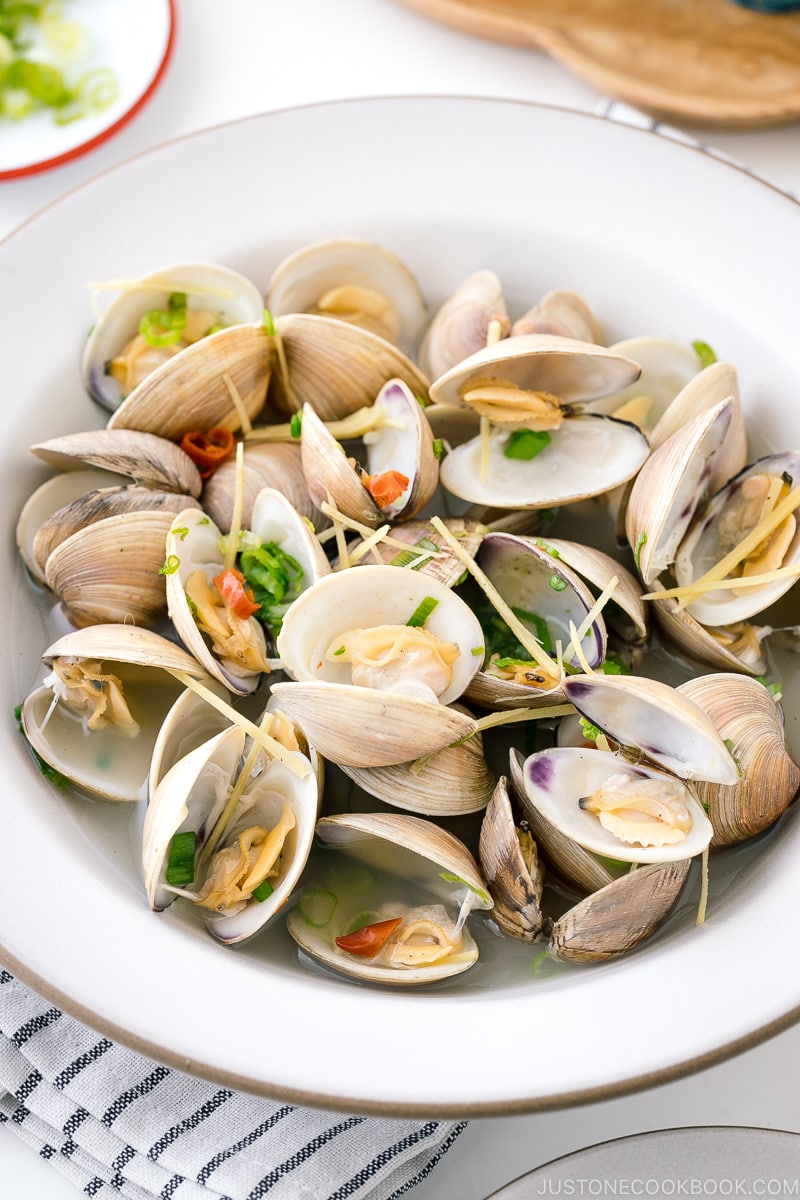
Ingredients for Sake-Steamed Clams
- Manila clams, or clams of your choice
- Sake
- Ginger
- Dried red chili pepper
- Greeno onion
If you are familiar with Japanese cuisine, you would probably notice the rare appearance of red chili pepper. Once in a while, we will use a dried red chili pepper (always just one!) in a dish to give some kick and a tiny bit of heat. We remove seeds completely, otherwise, it would be too spicy for the Japanese taste. But if you like it spicy, then just add more.
How to Make Sake-Steamed Clams
It’s really a 2-step recipe, and here it is!
- Clean clams – SUPER important, and I’ll talk about it more below.
- Steam clams in sake, ginger, chili until the clams are all open.
- Garnish with green onion and enjoy!
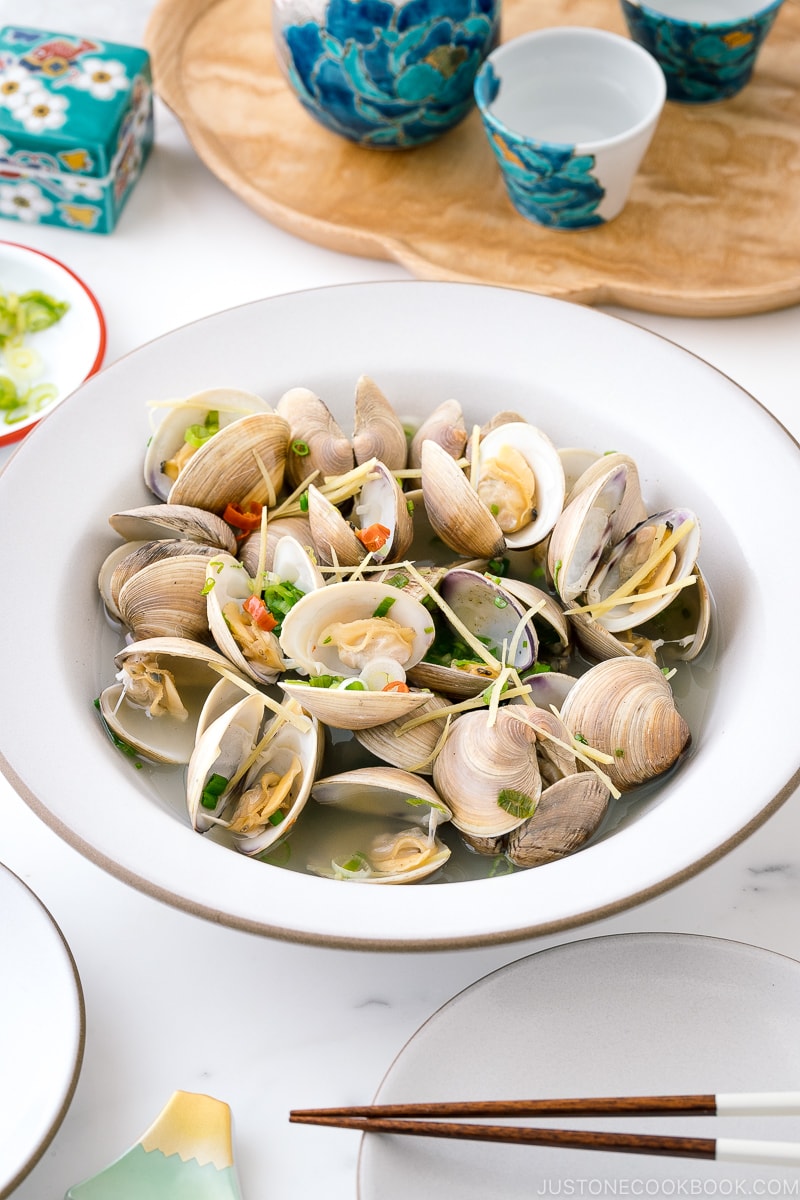
Important: How to Clean Clams
When you use fresh clams, don’t forget to clean the shellfish before you cook. Cleaning will help to draw out any dirt, sand, or seaweed from clams.
I highly recommend cleaning the clams even when the package or fishmongers say the clams are “ready to use”. I often taste sand in them, and you don’t want to experience that when you enjoy the delicious clams. You can read and follow my detailed tutorial.
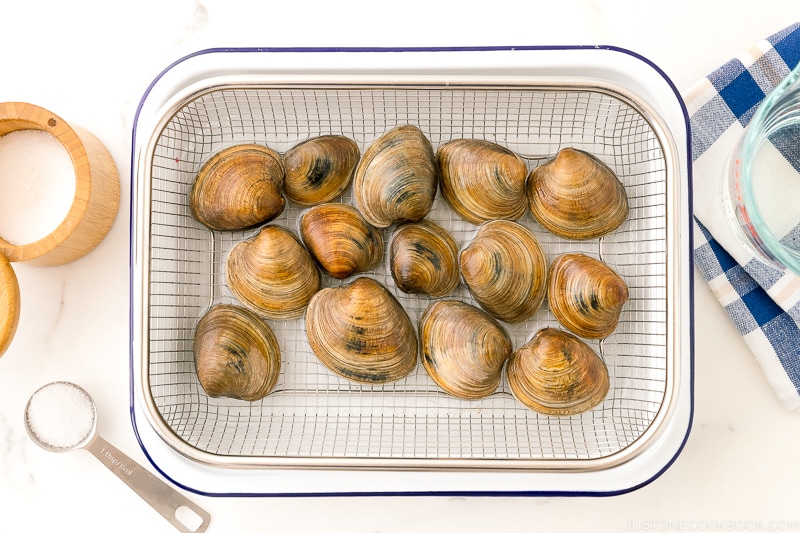
I always clean the clams as soon as I bring them home. If you don’t use the clams right away, you can keep them in the refrigerator for several days by storing in a container with a moist paper towel over the top.
3 Important Cooking Tips
- Clean the clams – Repeat, it’s important.
- Do not overcook the clams – Clams can get tough and gummy. As soon as clam shells open up, it’s done cooking!
- Shake the frying pan – Sometimes clams may overlap each other, which might have prevented the shells from fully opening. So shake the pan!
With these tips in mind, I hope you enjoy cooking clams. It was one of the first few dishes I learned to cook. Once you try it, move on to Clam Pasta. Now you can make an appetizer (Sake Steamed Clams) and a main dish (Clam Pasta)! They can be the unexpected fancy but easy weeknight
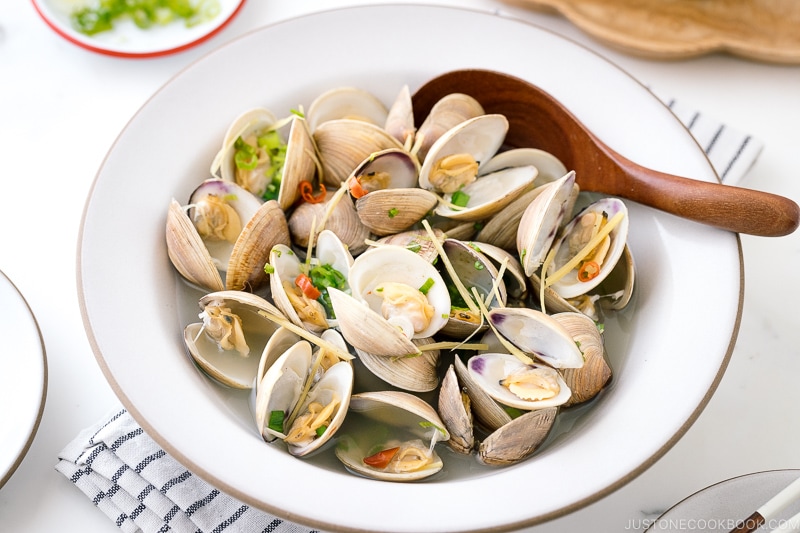
Wish to learn more about Japanese cooking? Sign up for our free newsletter to receive cooking tips & recipe updates! And stay in touch with me on Facebook, Pinterest, YouTube, and Instagram.
Japanese Sake Steamed Clams
Ingredients
- 1 green onion/scallion
- 1 knob ginger (1 inch, 2.5 cm; julienned)
- 1 dried red chili pepper
- 1½ lbs manila clams (cleaned, following my tutorial; it takes 1 hour, which is not included in the preparation time)
- ¾ cup sake
- freshly ground black pepper (optional)
Instructions
- Gather all the ingredients.
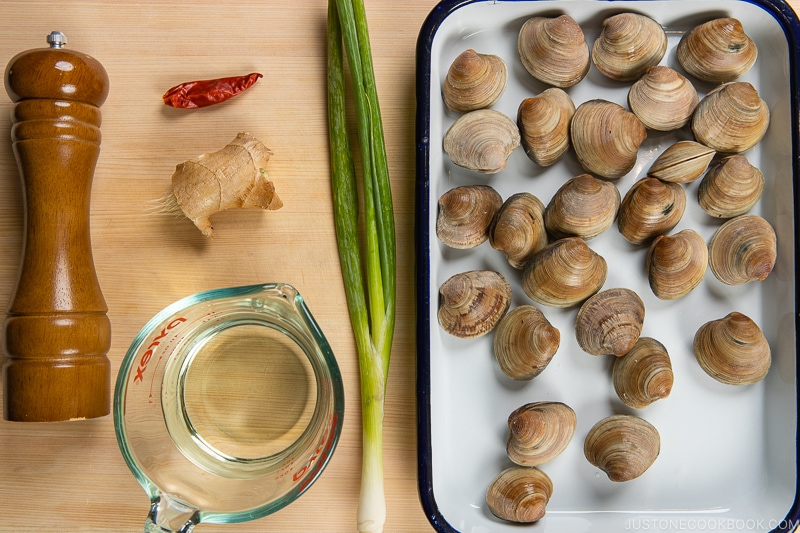
- Slice 1 green onion/scallion thinly and set it aside.
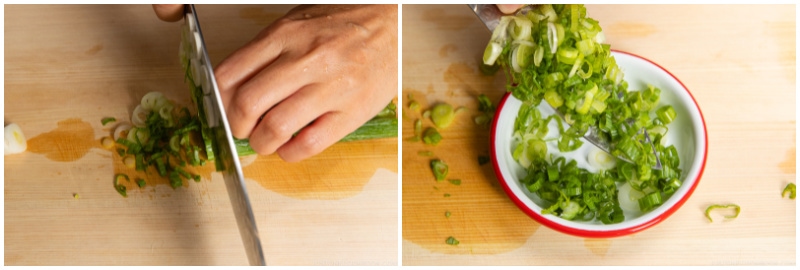
- Peel the skin of 1 knob ginger, cut it into thin slabs, and julienne into thin strips.
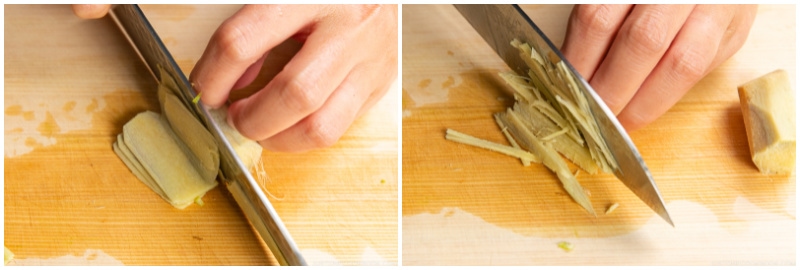
- Remove the seeds from 1 dried red chili pepper and cut the chili pepper into small rounds.
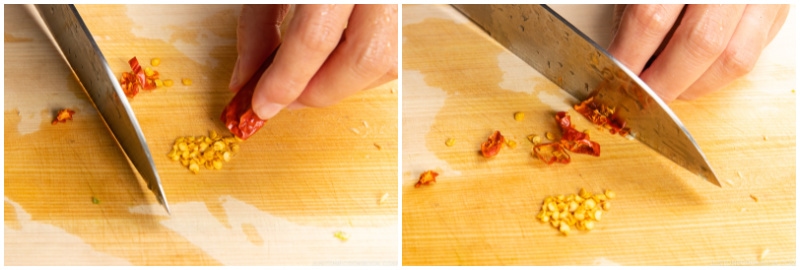
- In a large frying pan, place 1½ lbs manila clams in a single layer and add ¾ cup sake.
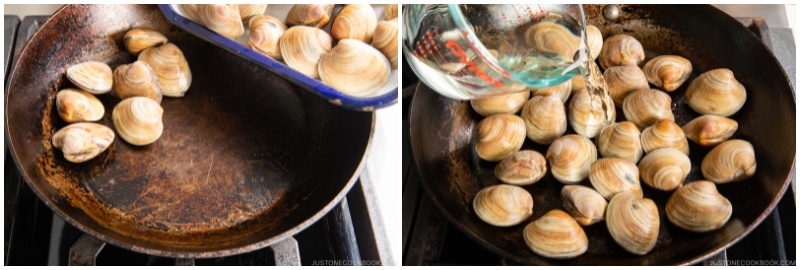
- Add the julienned ginger and dried red chili. Cover with the tight-fitting lid and bring the sake to a boil over medium-high heat.
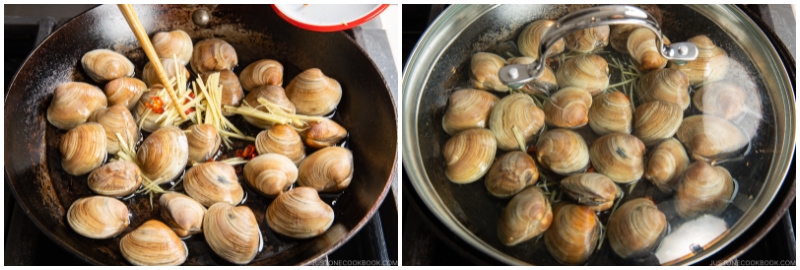
- Once it‘s bubbling nicely, lower the heat to medium and continue to steam for 3–5 minutes (2–3 minutes for smaller clams) until all the clams open their shells. Shake the pan once in a while to make sure the clams are not over-lapping each other. Remove and discard any clams that have not opened after you‘re done cooking.

- Remove the lid and add the sliced green onion and freshly ground black pepper.
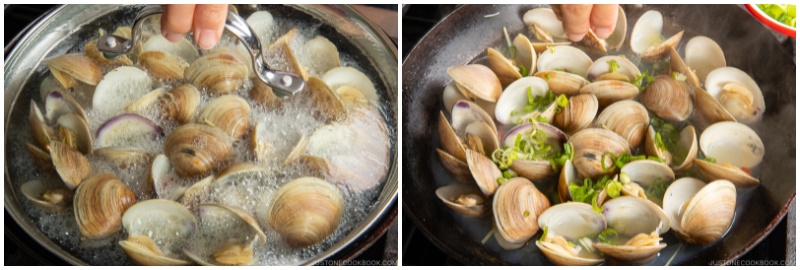
- Transfer the clams to a serving bowl with the remaining sauce and serve immediately.
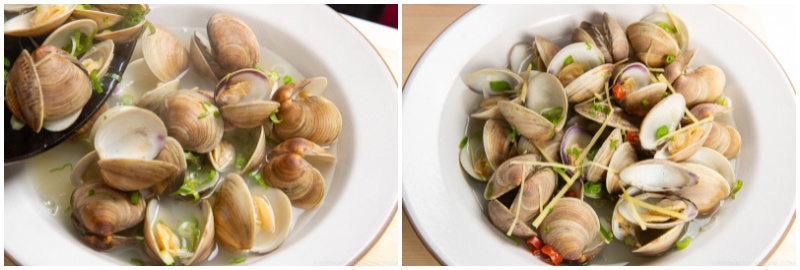
To Store
- You can keep the leftovers in an airtight container and store in the refrigerator for a day.
Nutrition
Did you make this recipe?
Tag @justonecookbook on Instagram so we can see your delicious creation!
Editor’s Note: This post was originally published on November 14, 2011. The post has been updated with new images, video, and blog content in September 2021.


